
16-Day Glory of the Silk Road (North Track): Beijing to Shanghai Private Group Tour
Product information
The-best-Asia-tour-packages
Reviews
5 out of 5 stars
Travel Back in Time: Traverse the Ancient Silk Road, Explore the Iconic and Stunning Danxia Landforms. A Unique and Fascinating Journey Through China.
Highlights
- Experience the splendid mix of China's man-made and natural wonders over 16 enriching days.
- Marvel at the stunning natural landscapes along the ancient Silk Road, featuring highlights such as the Bingling Temple Grottoes, the colorful Danxia landforms, Crescent Lake, and the Singing Sand Dunes.
- This journey is a paradise for photographers, promising to leave you with beautiful travel memories.
Itinerary
DAY 1 Beijing
No matter when your flight arrives in Beijing, you will be greeted by a guide at the airport and transferred to your hotel. After checking in, you will have the rest of the day free to explore at your leisure.
DAY2 Tiananmen Square - Forbidden City - Temple of Heaven
The tour guide will meet you in the hotel lobby to begin exploring the historic city of Beijing, the Forbidden City, the largest and most complete ancient palace in the world. You will walk to Jingshan Park, where you can enjoy a breathtaking view of the Forbidden City from the top of Coal Hill.
The Forbidden City is one of the most well-preserved and largest wooden structure ancient architectural complexes in China and even the world. These magnificent buildings can be divided into two main parts: the "Outer Court" and the "Inner Court." The Qianqing Gate serves as the boundary, with the Outer Court to the south where the emperor handled state affairs, and the Inner Court to the north where the imperial harem resided, serving as the emperor’s family living space. Walking through the Hall of Supreme Harmony, the Hall of Heavenly Purity, and the Palace of Earthly Tranquility, and appreciating the flowers and plants in the emperor’s garden, one feels as if they have traveled back to the days of ancient drama.
The Forbidden City houses a large number of valuable cultural relics, with estimates reaching over a million pieces. Due to the variety of relics, it is divided into multiple exhibition halls. Among them, the Treasure Hall and the Clock Hall are particularly eye-catching. The Clock Hall has clock demonstrations daily at 11:00 and 14:00, where you can see various uniquely designed mechanical clocks treasured by the Qing Dynasty, which will surely broaden your horizons.
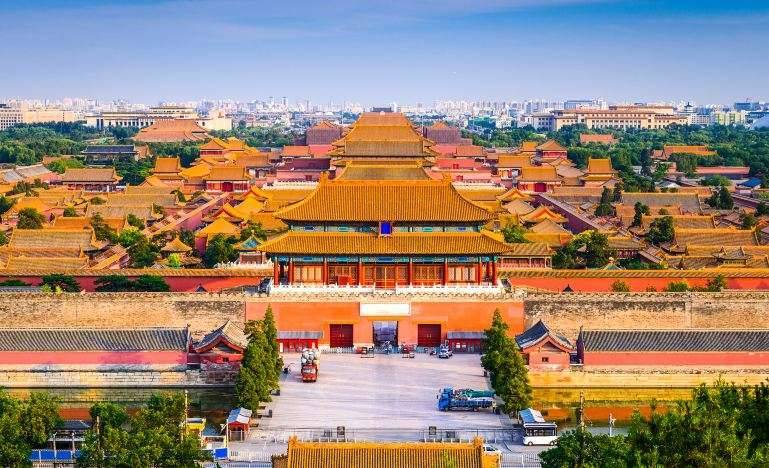

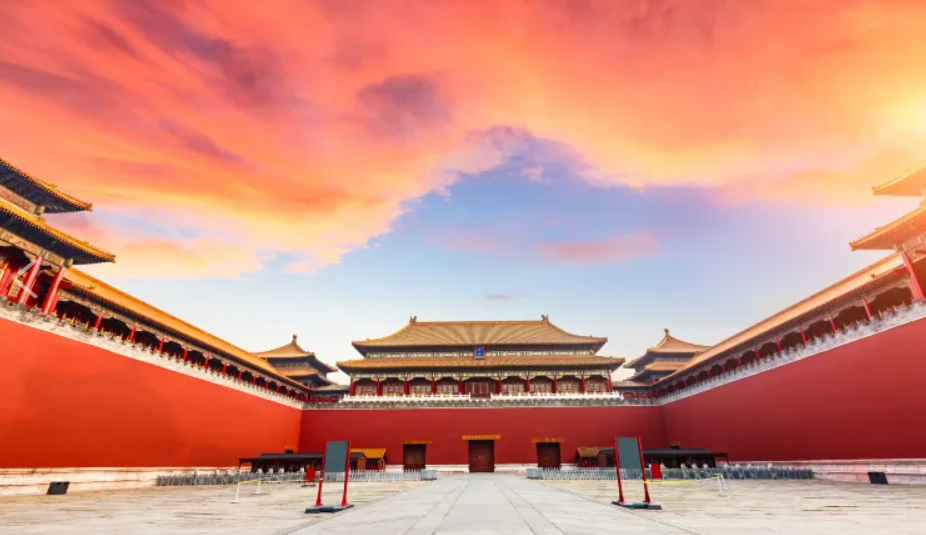
Enjoy lunch at an authentic Chinese restaurant along the way
Visiting the Temple of Heaven, the Temple of Heaven is a dedicated altar for emperors of the Ming and Qing dynasties to offer sacrifices to heaven, seek rain, and pray for a good harvest. It is a nationally renowned ancient architectural site. The northern part of the altar is circular, while the southern part is square, symbolizing "heaven is round and the earth is square." The entire Temple of Heaven is divided into the Inner Altar and the Outer Altar, with well-known structures such as the Hall of Prayer for Good Harvests and the Echo Wall located in the Inner Altar.
Regional Overview
The Inner Altar is divided into northern and southern parts by palace walls, with the northern part known as the "Qigu Altar." This is where the emperor holds the grand ceremony for praying for a good harvest in spring, praying for favorable weather and abundant crops. The main buildings include the Hall of Prayer for Good Harvests, the Hall of Imperial Longevity, the East and West Side Halls, the Gate of Prayer for Good Harvests, the Divine Kitchen, the Sacrificial Pavilion, and the Seventy-Two Long Corridors.
The southern part is the "Altar of Heaven," an open-air three-tiered circular stone altar where the emperor performs the sacrificial rites to Heaven on the Winter Solstice. Major structures include the Altar of Heaven, the Imperial Vault of Heaven, along with accompanying halls, the Divine Kitchen, the Three Treasuries, and the Sacrificial Pavilion.
Connecting the two altars is a stone platform that is 360 meters long, 28 meters wide, and 2.5 meters high, known as the "Sacred Way," also referred to as the "Sea-Mat Avenue," and called the "Danbi Bridge," symbolizing the long journey one must take to reach the heavenly court.

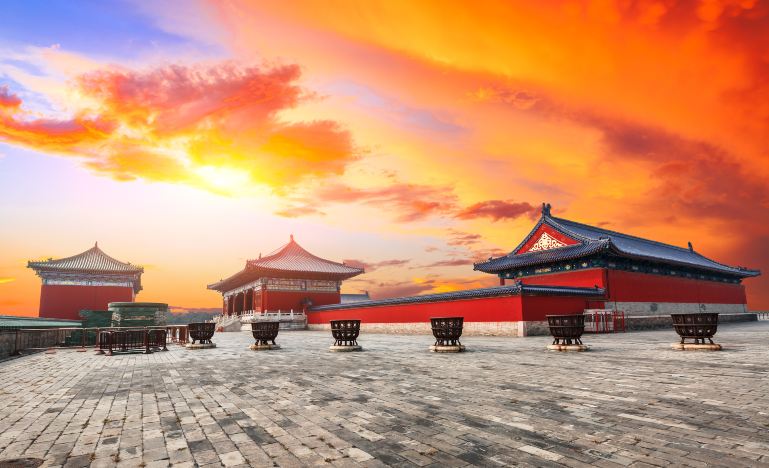

On the way back to the hotel, you can plan a night show or Peking duck dinner with the guide and seek suggestions.
DAY 3 Badaling Great Wall - Bird's Nest - Water Cube
Our guide will meet you in the hotel lobby, then start exploring the Great Wall.
The Mutianyu Great Wall is located in the Huairou District of Beijing. It connects to the Juyongguan Great Wall in the west and the Gubeikou in the east. Since ancient times, it has been a military stronghold guarding Beijing, known as the "Dangerous Ridge Fortress." The architectural style of the Mutianyu Great Wall is unique, with a dense arrangement of enemy towers, particularly the rare feature of three enemy towers standing on a single battlement.

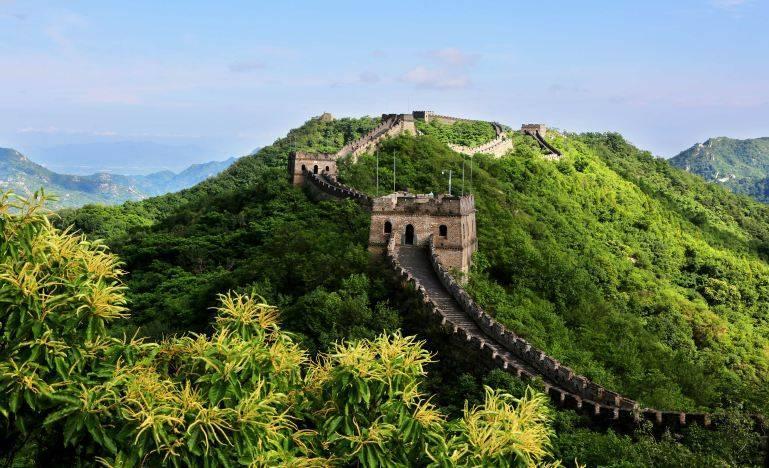
Enjoy lunch at a local Chinese restaurant near the Great Wall.
Drive back to Beijing, you can take a short nap in the car. Visit the exterior of the Bird's Nest and Water Cube, stunning buildings that were constructed for the Beijing Olympics. Return to the hotel for free activities.
The Bird's Nest (National Stadium) is located at the northern end of Beijing's central axis and served as the main stadium for the 2008 Beijing Olympics. With its high-end and atmospheric design, along with hosting numerous international competitions, it has become one of the new landmarks of Beijing in recent years.
The Water Cube (National Aquatics Center) is located on the northern side of Beijing city, featuring a very unique architecture with over 3,000 irregular air-filled bubbles on its exterior, resembling water molecules in a blue sea from afar. At night, the colorful lights make it a great place for nighttime photography.


DAY4 Beijing Gulou Yangmei Zhu Xiejie - Nanluoguxiang - Xi'an
You will have enough time in the morning to pack your luggage. Our tour guide and driver will wait for you in the hotel lobby. After checking out, we will load your luggage onto the vehicle, and you will have an afternoon of leisure activities. We will drive to Gulou Yangmeizhu Xiejie and Nanluoguxiang to experience the vibrancy of Beijing's hutongs. After lunch, in the afternoon, the driver and guide will take you to the high-speed train station for your journey to Xi'an (approximately five hours). Your Xi'an guide will be waiting for you at the station to assist you in transferring to your hotel.
DAY 5 Xi'an City Wall - Xi'an Bell Tower - Gao's Courtyard - Muslim Street
The Xi'an City Wall, also known as the Ming City Wall of Xi'an, is an existing structure from the Ming Dynasty. It spans a total length of 13.7 kilometers and was originally constructed in the third year of the Hongwu era (1370) under the reign of the Ming Dynasty's founding emperor, Zhu Yuanzhang. The construction was completed in the eleventh year of Hongwu (1378). The wall was built based on the foundations of the Sui and Tang dynasties, guided by Zhu Yuanzhang's policy of "raising the walls high, storing grain broadly, and delaying the title of king." Subsequently, Zhu Yuanzhang conferred the title of king of Qin upon his second son, Zhu Tan, with the princely fief and the capital located within the same city, resulting in a grand and robust city fortification. Moreover, the city walls have been preserved well due to frequent repairs and expansions throughout the Ming and Qing dynasties. In early 2004, while construction was underway on the road section of the city wall at Hanguangmen in Xi'an, the Shaanxi Cultural Heritage Research Institute was commissioned by relevant authorities to conduct archaeological investigations on the exposed sections of the wall. These investigations revealed a complex structure with a historical timeline extending from the Sui and Tang dynasties to modern times, having undergone five major renovations, thus holding significant historical value.
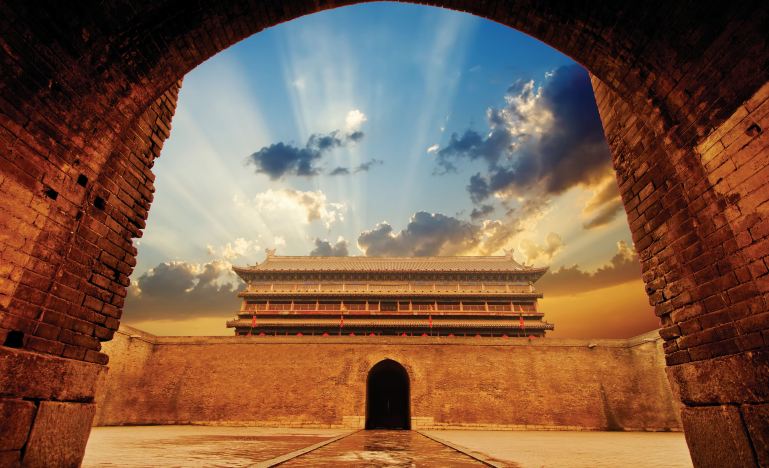
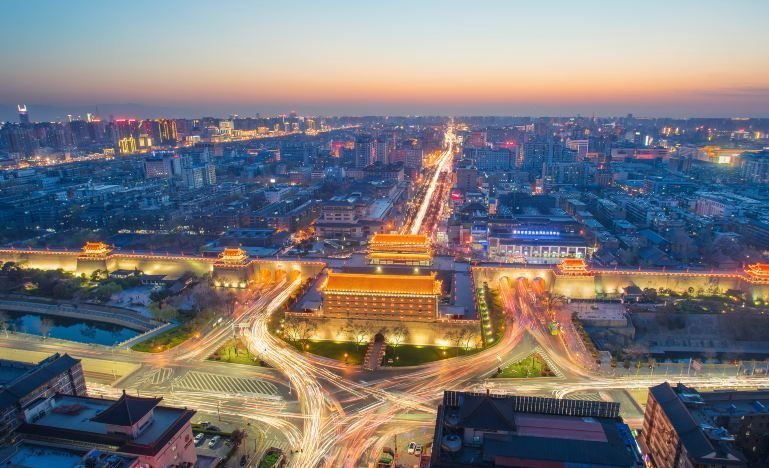
After visiting the Big Wild Goose Pagoda, you will have the opportunity to watch the fountain performance at the North Square. Huimin Street is a food street offering a feast of various delicacies, and you can also explore the local culture of paper-cutting and shadow puppetry.

DAY6 Qin Shi Huang Terracotta Army - The Song of Everlasting Regret Performance
Our guide will meet you in the hotel lobby and begin exploring the ancient city.
The Qin Shihuang Terracotta Warrior Museum, also known as the Terracotta Army or Qin Terracotta Warriors, is a burial pit for the Qin Shihuang mausoleum. Together with the mausoleum of Emperor Qin Shihuang, it forms the Qin Shihuang Mausoleum Museum.
The Terracotta Army of Qin Shi Huang is known as the Eighth Wonder of the World. More than a thousand soldier figurines unearthed here are all unique in appearance, with vivid expressions. It is a brilliant gem in the history of ancient Chinese sculpture art and is regarded as "one of the greatest discoveries in archaeological history of the twentieth century."


A Chinese-style lunch will be arranged near the Terracotta Army scenic area. Enjoy a grand historical drama on a mountain and water stage adapted from the narrative story of Bai Juyi. Return to the hotel.
DAY 7 After enjoying breakfast at the hotel and checking out, your private driver will take you to the high-speed train station to board the bullet train to Lanzhou.
Upon arrival in Lanzhou, your dedicated driver will pick you up and take you to the hotel for check-in, and you'll have the day free to explore at your leisure.
Lanzhou is an ancient cultural city with a long history. The term "Golden City" was recorded as early as the Han Dynasty. After the Sui Dynasty established the Lanzhou General Governor's Office, the name "Lanzhou" came into use. For over a thousand years from the Han to the Song Dynasty, Lanzhou served as a vital town in the northwest, acting as a "barrier to the Central Plains and a link to the Western Regions." The city is dotted with historical sites, with countless ruins. The Yellow River flows through the city, giving Lanzhou a unique and diverse natural landscape.
Recommended places to visit in Lanzhou include the Yellow River Scenic Line (Mother of Yellow River Statue, Zhongshan Iron Bridge, Waterwheel Park, etc.), Gansu Provincial Museum (closed on Mondays, registration with identification required), and the Qinqiang Museum.
DAY8 Lanzhou - Zhangye (Priority to arrange high-speed train) - Rainbow Danxia - Jiayuguan
After breakfast, travel by car to Lanzhou Railway Station, then take a high-speed train or train to Jiayuguan, with priority given to second-class seats on the high-speed train. The specific train schedule is subject to the actual ticket issued.
Go to Zhangye Danxia Landform
The Zhangye Danxia Rainbow Scenic Area is located in the Linze and Su'nan counties at the northern foot of the Qilian Mountains. It is 40 kilometers east of Zhangye City and 20 kilometers north of Linze County. Covering a total area of 50 square kilometers, with 4 square kilometers designated for visitor activities, it is now a World Geopark and a national 5A-level tourist attraction. The scenic area features seven viewpoints: the Colorful Sea of Clouds, Colorful Fairyland, Colorful Embroidery, Colorful Rainbow, Wohu Gorge, Colorful Ao River, and the Wanxiang Earthen Forest Valley. Additionally, there are over 30 attractions, including the Divine Dragon Playing with Fire, Spiritual Monkey Watching the Sea, Numerous Monks Worshiping Buddha, Divine Tortoise Asking Heaven, Golden Toad Seeking the Way, Big Scallop, Colorful Screen, Sleeping Beauty, and Wohu, making it a highly composite area of colored hills and Danxia landforms.
The colorful hills are renowned for their vibrant colors, interwoven layers, magnificent momentum, and spectacular scenes. The Wanshang Earth Forest Valley Danxia Landform Scenic Area features peaks resembling a forest, with a harmonious mix of dense and sparse formations, arranged in an extraordinary manner, showcasing incredible shapes crafted by nature. It embodies grandeur, danger, uniqueness, beauty, and tranquility.


DAY9 Jiayuguan - Jiayuguan Fortress - Yulin Caves - Dunhuang (Dreamy Sand Island, World Famous City)
The Jiayuguan Pass Fortress is located 5 kilometers west of Jiayuguan City, and it is the western section of the Ming Great Wall. The fortress was first built during the Ming Dynasty.
The Jiayuguan Fortress is located within the Jiayuguan Cultural and Scenic Area. The entrance ticket is a general ticket, which requires visiting the entire scenic area. The area is not very large, with a total perimeter of about 4 kilometers, and it can be explored on foot. If you're not physically fit, you can rent a bicycle at the entrance to enjoy your visit.
The entrance is on the east side. Upon entering, the first thing you see is the Black Mountain Stone Sculpture Group, which is a collection of stone carvings created by modern stonemasons that showcases the historical and cultural heritage of Jiayuguan. The Black Mountain Stone Sculpture Group consists of seven parks available for visitation: the Celebrity Inscription Park, Ancient Poetry Park, Historical Events Park, Story Park, Guerrilla General Stone Carving Park, Wei and Jin Tomb Brick Wall Mural Stone Carving Park, and the Black Mountain Stone Carving Park.
Continuing forward, you can see the Jiayuguan Great Wall Museum, which is a museum themed on the history and culture of the Great Wall. It is equipped with advanced facilities and showcases the history, culture, and artifacts of the Great Wall and Jiayuguan.
Going further west leads to the core area, where you can first visit the Jiuyan Spring Lake on the left before entering the Guan City. The area around the "Jiuyan Spring" is lush with aquatic plants and has a pleasant scenery, making it a great place for ancient troops to station and raise horses for frontier defense. Today, the Jiuyan Spring shimmers with clear blue water, transparent to the bottom. The beauty of the "Jiuyan Spring" lies in its tranquility, calm and undisturbed.


Yulin Caves are part of the Dunhuang Caves, excavated before the Sui and Tang dynasties. There are currently 43 caves from the Tang, Five Dynasties, Song, Western Xia, and Yuan dynasties, distributed on the steep cliffs on both the east and west banks of the Yulin River, with 32 caves on the east cliff and 11 on the west cliff. The murals cover an area of 4,200 square meters, and there are 259 colored sculptures, accounting for about one-ninth of the total mural area of the Mogao Caves. The Yulin Caves share a lineage with the Mogao Caves in terms of content, artistic style, and painting techniques, and they are considered sister caves.

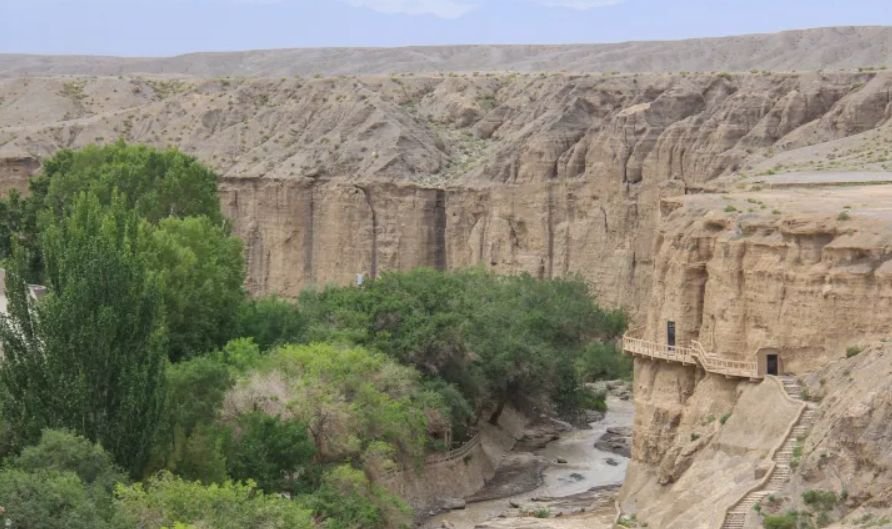
DAY10 Dunhuang - Mingsha Mountain and Crescent Lake
Drive to Mogao Caves.
Mogao Caves, also known as the Thousand Buddha Caves, are located on the southeastern side of Dunhuang city. The caves were first constructed during the Eastern Jin Dynasty of the Sixteen Kingdoms period and were hewn over a millennium, continuing until the end of the Yuan Dynasty. They house a large number of murals, cave temples, and cultural relics, making it a world-renowned Buddhist art destination. Here, one can admire the grand and richly-contented cave and mural art, and learn about the development history of Buddhism in Dunhuang over a thousand years through explanations and film presentations, making it a must-visit for tourists in Dunhuang.
The current Mogao Caves Scenic Area consists of the Mogao Caves Digital Exhibition Center and the Mogao Caves themselves, both operating on a combined ticket system, and tickets are not sold separately. Since September 11, 2014, the scenic area has implemented a reservation system for visits, and tourists must first reserve tickets via phone or online, visiting according to their scheduled time. Daily entry is limited to 6,000 people.


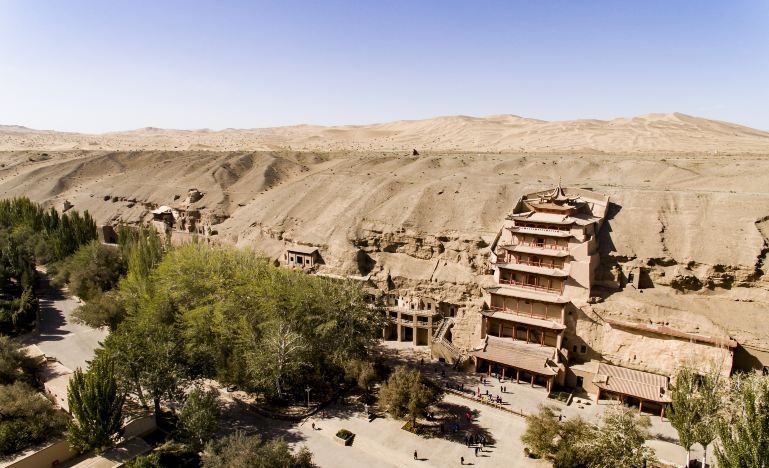
Mingsha Mountain and Crescent Spring are located south of Dunhuang city. Here, the sand dunes and spring coexist, and it has long been known as a "desert wonder," making it one of Dunhuang's landmarks. You can climb Mingsha Mountain to overlook Crescent Spring, and enjoy the sunset over the vast desert from the mountain top, experiencing the desolate expansiveness of the Northwest desert.
Although water and fire have always been incompatible, the Crescent Spring lies peacefully amidst a sea of sand dunes. Situated at the foot of the Mingsha Mountain and surrounded by sand hills, the geographical conditions cause the sand to flow upwards instead of downwards during windy weather. As a result, Crescent Spring is never buried by sand and is acclaimed as the "Eye of the Desert."
The mountains of Mingsha Shan are formed from accumulated sand. From a distance, the sand dunes rise and fall, creating a spectacular view. It is recommended to plan your visit to the scenic area in the afternoon, as this not only helps you avoid the midday heat of the desert but also allows you to climb to the top of the mountain at sunset to overlook the distant sea of sand and the Crescent Lake below, while enjoying a beautiful sunset.
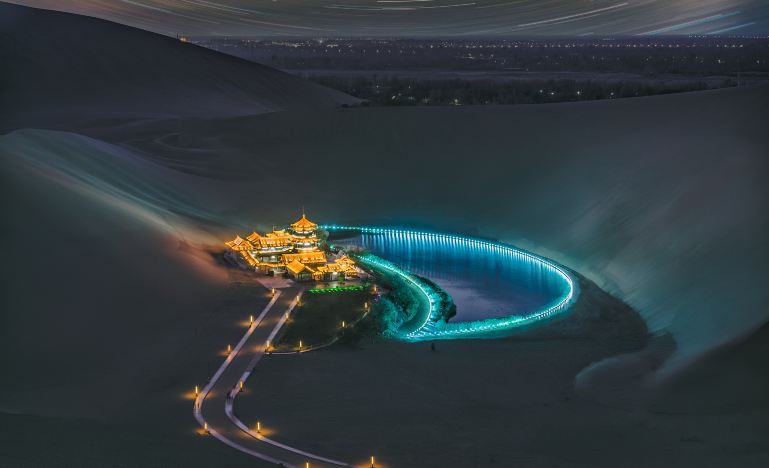

DAY 11 Dunhuang - Yangguan (No friends beyond "Yangguan") Head to Liuyuan Station to take the train --- Arrive in Turpan
The Yangguan Ruins, also known as the Yangguan Museum, are located on the western side of Dunhuang City, approximately 60 kilometers from the city center by car. This scenic area is built around the ancient Yangguan Ruins. Within the area, there are some imitation Han Dynasty-style city gate constructions, as well as several exhibition halls showcasing numerous cultural relics from the ancient Silk Road. Visitors can explore the relics and buildings, take photos with the ancient Yangguan Ruins, and stroll down a street of local residences within the scenic area to purchase souvenirs.
Yangguan is famous worldwide due to the well-known ancient poem "I urge you to raise your cup again, for beyond Yangguan there are no old friends." It has always been a significant town on the Silk Road. Today, the Yangguan ruins are a stop along the western route of Dunhuang, and most tourists traveling this route will come here to see the famous barrier site, typically spending 1-2 hours for the visit.
When visiting the Yangguan Ruins, the first stop is the Yangguan Museum, which features a replica of Han Dynasty architecture. Inside the museum, there are exhibition halls such as the Two Passes Han塞 Exhibition Hall, the Silk Road Exhibition Hall, the Yangguan Research Institute, the Han-style Gatehouse, the Replica Barracks, the Yangguan Duwei Mansion, the Replica Han City Gate, a Street of Replica Han-style Dwellings, and the Tourism Crafts Exhibition Center. Each of these can be visited one by one. After the visit, head to the Yangguan Beacon Tower at the end of the scenic area, where the historical site of Yangguan is located. This is a great spot for taking photos, and the thousand-year-old ruins set against the backdrop of the desert are truly magnificent.
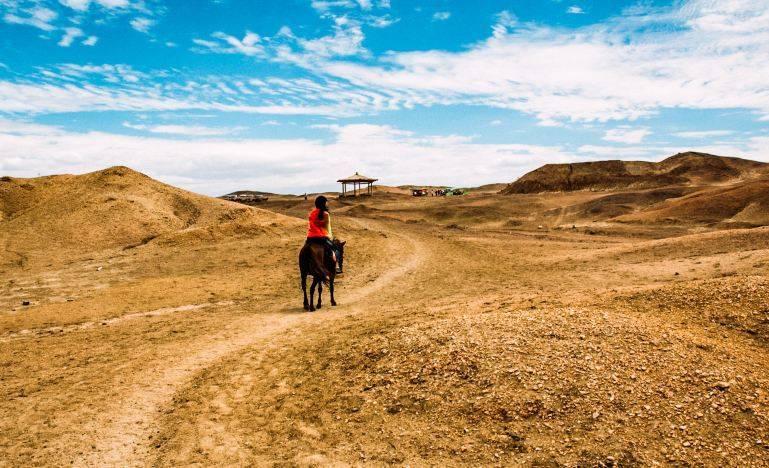


According to the train ticket number, transfer to Liuyuan Station, take the train to Turpan, and check in at the Turpan hotel.
DAY 12 Turpan --- Flaming Mountain, Turpan --- Grape Valley --- Arrive in Urumqi
Flame Mountain Scenic Area is located next to the Lanzhou-Urumqi Expressway on the eastern side of Turpan City, approximately 30 kilometers from the urban area by car. It is a scenic area primarily featuring reddish-brown sandstone landforms. Historically, this was the site of the ancient kingdom of Gaochang, and in legend, it is the location where the monk Tang Seng and his disciples used the banana fan to extinguish the flames of Flame Mountain in "Journey to the West." This makes it a popular destination for many tourists visiting Turpan. The Flame Mountain Scenic Area is divided into underground and aboveground sections, and it takes about 1-2 hours to explore the entire area. Generally, visitors first head to the underground section, which is a corridor-style exhibition hall. The ceiling of the exhibition hall is designed with decorative lighting resembling the sky, making it quite unique. Inside the exhibition hall, there are sculptures and displays related to the ancient kingdom of Gaochang, allowing visitors to learn about its history. The exhibition hall also features a souvenir shop and a café, where guests can purchase items based on personal interests. After visiting the underground area, visitors can proceed to the aboveground section, which showcases the stunning red rocks and cliff formations that are very photogenic. In the open square, there are many sculptures themed on "Journey to the West," including a giant thermometer named Golden Cudgel. During the summer, the weather at Flame Mountain is particularly hot, with temperatures reaching as high as 58 degrees Celsius, and the climate is very dry. Visiting during this time can be a unique experience. However, it’s important to bring plenty of drinking water and prepare sun protection gear such as hats, sunglasses, and scarves to prevent heatstroke.

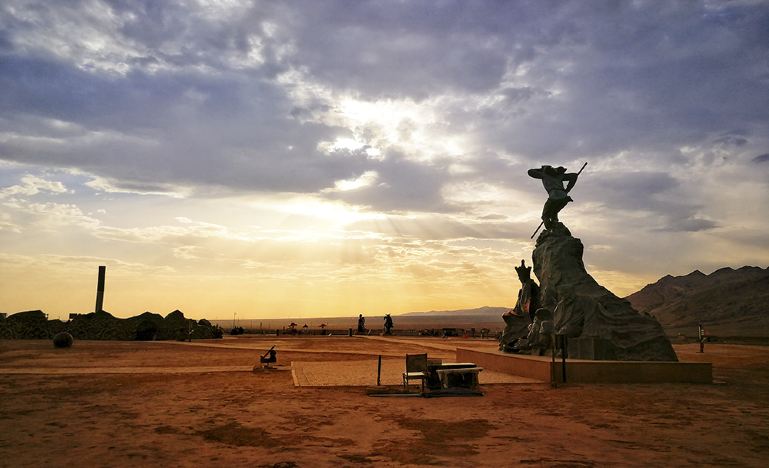
A song titled "The Grapes of Turpan have Ripe" describes the sweetness of grapes with its melodious tune and heartfelt lyrics. The renowned mezzo-soprano singer Guan Muzhen conveys the grapes of Turpan with her rich and soulful voice, capturing the true love story of a Uyghur girl named Anarhan and her love, who guards a border outpost in the Kirim region. This made the grapes of Turpan well-known far and wide. There is a place in Turpan, Xinjiang called Grape Valley. It produces various fruits. In May, there are mulberries and apricots; in July and August, fragrant pears, peaches, and sand fruits; by September and October, the grapes that people love have ripened. The history of grape cultivation in Turpan spans 3,000 years. Grape Valley is not only a museum of grapes but also a tourist destination for those undergoing a transformative experience, as well as one of the first batch of nationally recognized 5A-level natural scenic spots. Anyone who travels to Xinjiang cannot miss Turpan; every traveler to Turpan must, after experiencing the heat of Flaming Mountain, dive into Grape Valley to enjoy the unique adventure of contrasting temperatures of ice and fire. The Grape Valley scenic area includes an amusement park, the Wang Luobin Music Art Museum, Dazhuo, Afanti, and an oasis vineyard, comprising five visiting areas. Throughout Grape Valley, there are more than a hundred Uyghur family-run homestays that dot the landscape. Walking under the shade of grape vines in Grape Valley, enjoying the beautiful scenery, and when tired, you can sit cross-legged on the kang (a traditional heated bed) of a homestay to taste grapes, cantaloupes, and relish generous portions of hand-pulled mutton served by the host, while enjoying the graceful dance of Uyghur girls.


After the visit, take a ride to Urumqi.Approximately 200 kilometers / about 2 hours and 30 minutes. Free activities after checking in to the hotel.
DAY 13 Urumqi---Tianshan Tianchi---Xinjiang International Grand Bazaar
The wonderful journey begins now as we take a car to the scenic area of Tian Shan Tian Chi, known as the "Jade Pool" in ancient times and the location of the Pan Tao banquet hosted by the Queen Mother of the West in mythological stories.
Warm reminder: The Tianshan Tianchi Scenic Area may be temporarily closed due to weather or other force majeure factors in winter. Today's itinerary will change to free activities in Urumqi city, and the ticket fee for Tianshan Tianchi will be refunded. Thank you for your understanding!
Tianshan Tianchi, also known as Tianchi National Geopark, was formerly called "Yaochi." It is located within the territory of Fukang City in Changji Prefecture, on the north side of Bogda Peak, about 110 kilometers from ᅵrmqi City, and is a famous tourist destination in Xinjiang.
In ancient Chinese mythology, Tianchi is also the bathing place of Xi Wangmu.
Tianchi Lake is 1910 meters above sea level, with a maximum depth of 105 meters. The lake reflects the stunning Bogda Peak, surrounded by spruce trees, creating a fairy-tale landscape. The scenic area includes a variety of natural attractions such as alpine lakes, wetland meadows, and forest canyons. In 2013, the area was recognized as a national geological park by the government. When visiting Tianchi, be sure not to just stay by the lakeside, or you will miss many surprising sub-scenic spots.
Recommended hiking routes: Lakeside Dock - Haixisha Beach, Lakeside Dock - Dongxiaotianchi (Feilong Pond)




Go to Xinjiang International Grand Bazaar
The Xinjiang International Grand Bazaar is a AAAA-level scenic spot that integrates特色建筑, ethnic commerce, song and dance performances,特色美食, jewelry and jade, and other rich formats. As a nationally recognized cultural industry demonstration base and a cultural creative industry platform in Xinjiang, it attracts over ten million visitors annually and is an important cultural and tourism landmark in Urumqi. It has now become a golden business card for Xinjiang's cultural tourism, as well as a "window to Xinjiang," "window to Central Asia," and "window to the world."

DAY14 Urumqi --- Shanghai
Your Silk Road exploration ends here as you depart from Urumqi to Shanghai. You will be transferred to the airport to board your flight to Shanghai. Upon your arrival in Shanghai, your local guide will meet you and take you to your hotel, introducing you to the local landmarks of this bustling city along the way. Free time for activities.
DAY 15 Shanghai -- Chenghuang Temple/The Bund/Nanjing Road Pedestrian Street
City God Temple Tourist Area The City God Temple Tourist Area features two main attractions: Yuyuan Garden and the Old City God Temple, making it a must-visit spot for tourists who are new to Shanghai. Here, visitors can experience Shanghai's folk customs, enjoy authentic Shanghai snacks and local cuisine. At night, the colorful landscape lights on the ancient-style buildings also make this area a beautiful sight.
You can't miss the Nanxiang soup dumplings here. You can also sit inside the Green Wave Gallery restaurant, enjoying Shanghai local cuisine while watching the bustling crowd coming and going downstairs.

The Bund, located along the Huangpu River, stretches approximately 1.5 kilometers and serves as a symbolic landmark of Shanghai. The eclectic architecture of the various international buildings and the night view of the river are its essence.
The Bund is lined with dozens of classical revival buildings of diverse styles, including the famous Bank of China building, Peace Hotel, Customs House, and HSBC building, which showcase the former glory of the "Wall Street of the Far East." Surprisingly, these buildings were not designed by the same architect nor constructed during the same period, yet they possess a unique harmonious beauty. The Bund features a variety of architectural styles, including French Classical, French Mansion style, and Gothic, all of which are significant historical landmarks and representative buildings of modern China's history, as well as a stunning scenic line along the Huangpu River.
As night falls, the neon lights on both sides shine and reflect each other. Taking a Huangpu River cruise or ferry, you can enjoy the breezy river wind while gliding along the Huangpu River. On one side is the Bund, a testament to historical development, and on the other is the modern landmark Lujiazui of Shanghai. There's also the elegant silhouette of the Waibaidu Bridge, allowing you to appreciate the beautiful side of this bustling metropolis from a different angle.

Nanjing Road Pedestrian Street is approximately 1200 meters long, lined with shops on both sides. At a glance, modern buildings mix with old European-style architecture, and the continuous shop signs hang vertically. Especially under the night sky, the neon lights flicker, creating a unique charm. You can also take a ride on the "Ding Ding" tram, which resembles a smaller version of the old trams, to experience the flavor of old Shanghai.
The pedestrian street begins at Xizang Zhong Road (east of People's Square) and ends at Henan Zhong Road, with a dark red marble monument at each end. Walking along the pedestrian street, one can find numerous creative urban sculptures, as well as stylish street lamps, flower beds, and phone booths. Looking down, you can see many manhole covers engraved with different city architectural patterns, and there are plenty of benches in the center of the street for visitors to take a seat.
Nanjing Road Pedestrian Street is one of the bustling commercial streets in Shanghai. As early as the early 20th century, it became a gathering place for department stores, and strolling here will surely yield great rewards. Today, it features both well-established department stores like Yong'an Department Store, Hualian Commercial Building, and Silk Commercial Building, as well as large shopping centers such as New World City, Bailian World Trade International Plaza, Plaza 66, HKRI Taikoo Hui, and Hongyi Plaza, where you can almost find any product you wish to buy.
Nanjing Road Pedestrian Street is still a paradise for foodies, with shopping centers featuring various trendy restaurants, coffee shops, and multiple eateries and food stores, such as the old-school Laokele Restaurant specializing in Shanghai cuisine, Dexing Pavilion, and Cuiting Restaurant, as well as the First Food Store and Shen Dacheng Dim Sum Shop among other snack shops.
After admiring the beautiful night view, a car will take you to the hotel
DAY 16 Shanghai - A Warm Home
Your driver will meet you at the hotel and drive you to the airport for your flight home.


